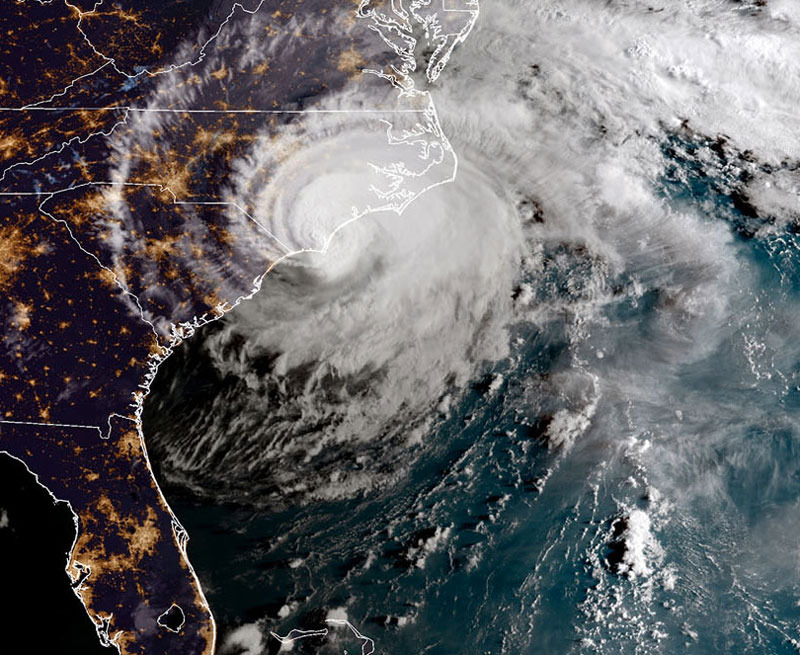
Tale of Two Storms
By now you’ve doubtless seen the stats on Florence. Since coming ashore in the Carolinas early Friday as a Category 1 hurricane, the storm has left 17 dead, almost a million evacuees still unable to return home, extensive flooding, major highways shut down, 700,000 homes and businesses without power — and it hasn’t stopped yet. North and South Carolina continue to get significant rain and flooding, prompting emergency services to warn some communities that “the worst is yet to come.” The remains of Florence recurved to the northeast and are currently dumping more rain and wind over Ohio. The system will reach the New York area in a day or two and then exit back into the Atlantic where it will finally expire.
This footage, taken of a marina near New Bern, North Carolina, shows significant damage to boats and docks. In the few other videos we’ve seen so far, boats in other marinas (some of which have incorporated ‘hurricane-proofing’ improvements in their design), seem to have fared much better.
For some kind of perspective on the size of this storm, the eye of Florence — just the eye — was as big around as the peninsula from San Francisco to San Jose. As it made landfall, the storm’s diameter was a bit over 350 miles — the distance from L.A. to the Bay Area. Rainfall in the first three days was 20-40 inches, making it the wettest single system ever recorded in any East Coast state except Florida. That’s also more — in three days — than the Bay Area gets in a normal rain year. The approximately 14 trillion gallons of rain dropped on the Carolinas and surrounding states is more water than flows under the Golden Gate in a week.

As staggering as those numbers are, an even bigger storm is plowing into China as we ‘come on the air’ this Monday morning. Meteorologists are calling Super Typhoon Mangkhut “the most powerful storm of 2018.” At its strongest, Mangkhut exceeded category 5 with sustained winds over 200 mph. (‘Super’ typhoons earn the name for sustained winds exceeding 150 mph.) When it steamrolled over the Philippines (as Typhoon Ompong) on Friday — with sustained winds of ‘only’ 120 mph — it was an almost unbelievable 550 miles in diameter.
Although the mountainous terrain ‘protects’ much of the Philippine Islands from flooding and high winds, damage was significant. There are 69 confirmed deaths as of this writing. While tragic, it’s worth noting that’s only a fraction of the 7,000 people who perished in the onslaught of Super Typhoon Haiyan in 2013. The hard lessons learned from that storm have resulted in many new emergency procedures that, so far, seem to have been effective. The governor of one province even ordered a temporary ban on alcohol consumption as the storm approached, since a drunk man perished in one past storm.
Exiting the Philippines, Mangkhut started gaining strength again over the South China Sea. It slammed into Hong Kong and mainland China yesterday. News of destruction continues as this ‘Lectronic goes to press.
Whenever we report on significant storms, we try to include whatever information we can about their effects on recreational boating. At this time, that information seems premature and trivial. When lives are on the line, the only boats worth mentioning are the hundreds of small craft in the Carolinas and Far East that are being used by rescue crews to save many of those lives.
